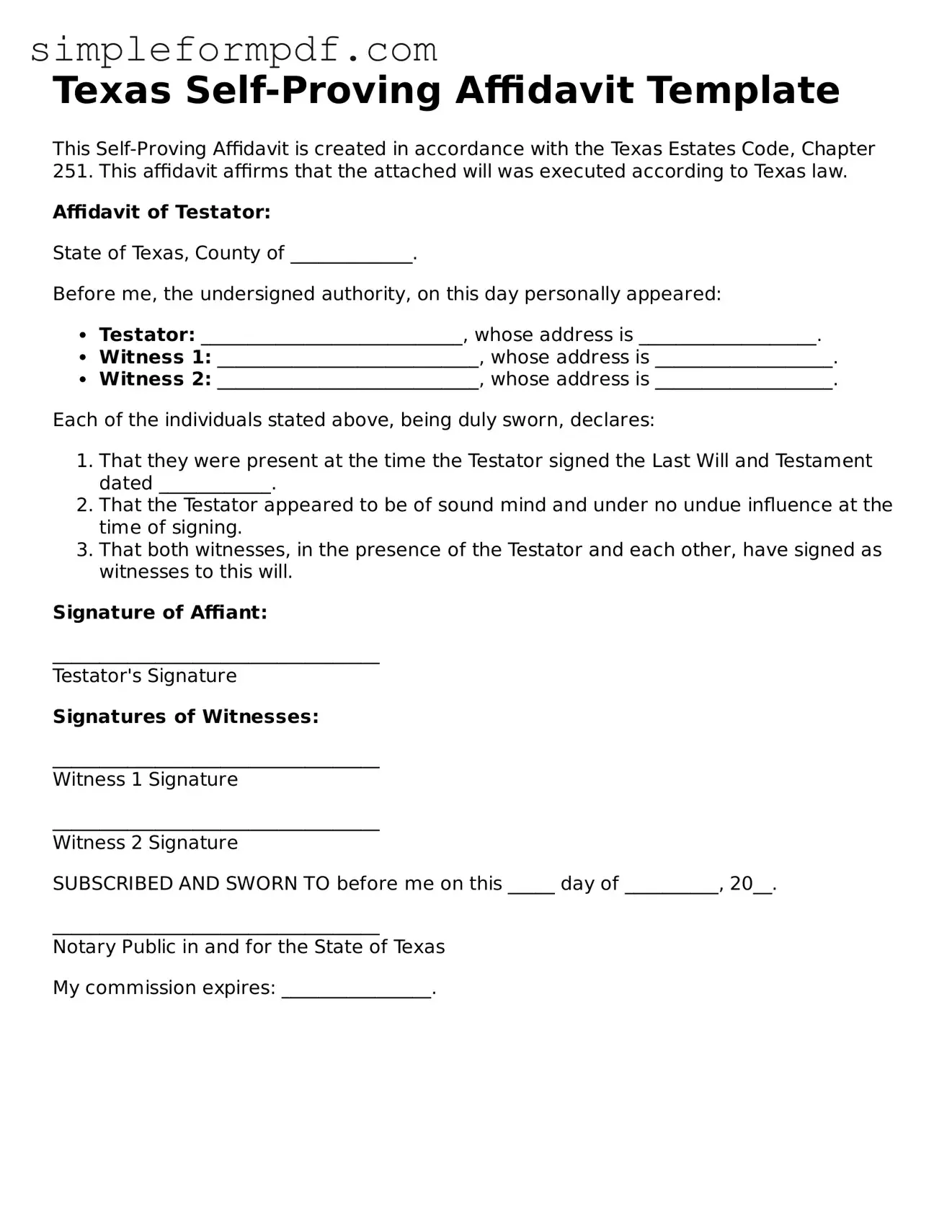Texas Self-Proving Affidavit Template
This Self-Proving Affidavit is created in accordance with the Texas Estates Code, Chapter 251. This affidavit affirms that the attached will was executed according to Texas law.
Affidavit of Testator:
State of Texas, County of _____________.
Before me, the undersigned authority, on this day personally appeared:
- Testator: ____________________________, whose address is ___________________.
- Witness 1: ____________________________, whose address is ___________________.
- Witness 2: ____________________________, whose address is ___________________.
Each of the individuals stated above, being duly sworn, declares:
- That they were present at the time the Testator signed the Last Will and Testament dated ____________.
- That the Testator appeared to be of sound mind and under no undue influence at the time of signing.
- That both witnesses, in the presence of the Testator and each other, have signed as witnesses to this will.
Signature of Affiant:
___________________________________
Testator's Signature
Signatures of Witnesses:
___________________________________
Witness 1 Signature
___________________________________
Witness 2 Signature
SUBSCRIBED AND SWORN TO before me on this _____ day of __________, 20__.
___________________________________
Notary Public in and for the State of Texas
My commission expires: ________________.
